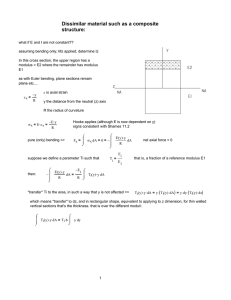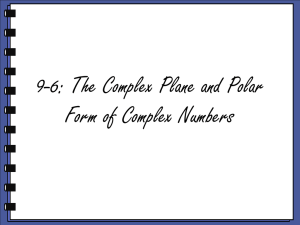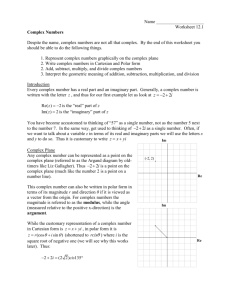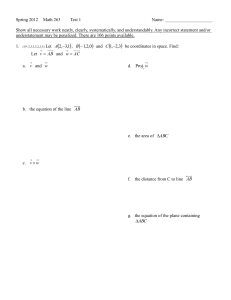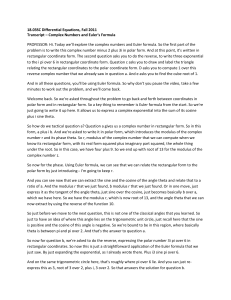4C.NCN.4.5.6.12.6.11
advertisement
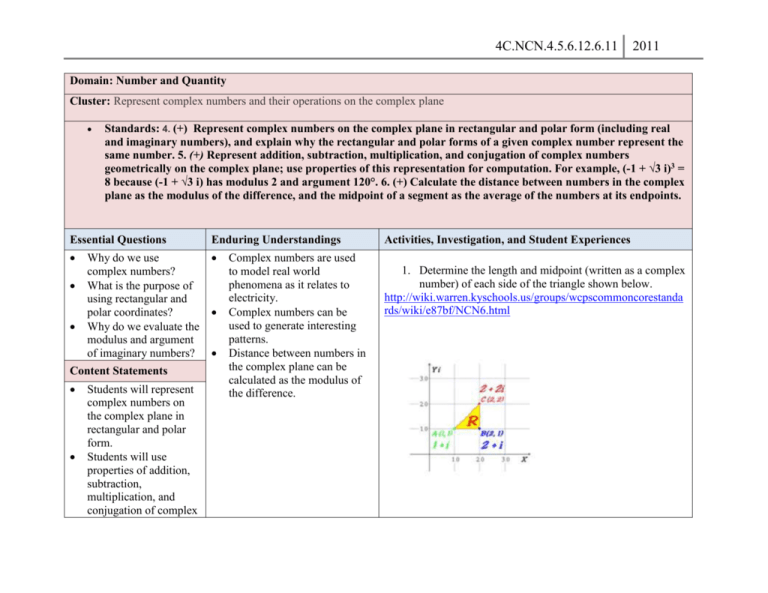
4C.NCN.4.5.6.12.6.11 2011 Domain: Number and Quantity Cluster: Represent complex numbers and their operations on the complex plane Standards: 4. (+) Represent complex numbers on the complex plane in rectangular and polar form (including real and imaginary numbers), and explain why the rectangular and polar forms of a given complex number represent the same number. 5. (+) Represent addition, subtraction, multiplication, and conjugation of complex numbers geometrically on the complex plane; use properties of this representation for computation. For example, (-1 + √3 i)3 = 8 because (-1 + √3 i) has modulus 2 and argument 120°. 6. (+) Calculate the distance between numbers in the complex plane as the modulus of the difference, and the midpoint of a segment as the average of the numbers at its endpoints. Essential Questions Enduring Understandings Why do we use complex numbers? What is the purpose of using rectangular and polar coordinates? Why do we evaluate the modulus and argument of imaginary numbers? Content Statements Students will represent complex numbers on the complex plane in rectangular and polar form. Students will use properties of addition, subtraction, multiplication, and conjugation of complex Complex numbers are used to model real world phenomena as it relates to electricity. Complex numbers can be used to generate interesting patterns. Distance between numbers in the complex plane can be calculated as the modulus of the difference. Activities, Investigation, and Student Experiences 1. Determine the length and midpoint (written as a complex number) of each side of the triangle shown below. http://wiki.warren.kyschools.us/groups/wcpscommoncorestanda rds/wiki/e87bf/NCN6.html 4C.NCN.4.5.6.12.6.11 numbers on the complex plane to make computations. Students will calculate the distance between numbers in the complex plane as the modulus of the difference. Students will calculate the midpoint of a segment as the average of the numbers at its endpoints. Assessments Students will solve problems similar to the below. 1. Represent graphically and give the polar form of 7 – 5j. 2011 2. http://education.ti.com/xchange/US/Mat h/PrecalculusTrig/12675/Transitions_St udent.pdf (Activities on rectangular and polar coordinates) 4C.NCN.4.5.6.12.6.11 2. Represent 1 + j 3 graphically. 3. Find the modulus and argument of z = 4 + 3i. 2011 4C.NCN.4.5.6.12.6.11 The complex number z = 4 + 3i is shown in Figure 2. It has been represented by the point Q which has coordinates (4, 3). The modulus of z is the length of the line OQ which we can find using Pythagoras’ theorem. (OQ)2 = 42 + 32 = 16 + 9 = 25 and hence OQ = 5.The complex number z = 4 + 3i. Hence the modulus of z = 4 + 3i is 5. To find the argument we must calculate the angle between the x axis and the line segment OQ. Website source: http://www.mathcentre.ac.uk/resources/leaflets/sigma/complex_ numbers/sigma-complex9-2009-1.pdf 2011 4C.NCN.4.5.6.12.6.11 Equipment Needed: Teacher Resources: Smart board Calculators (graphing) White boards Overheads 2011 http://www.purplemath.com/modules/comple x2.htm http://www.khanacademy.org/video/complex -numbers--part-2?playlist=Algebra http://www.khanacademy.org/video/complex -numbers--part-1?playlist=Algebra http://www.mathworksheetsgo.com/algebracalculators/complex-numbercalculator.php http://www.purplemath.com/modules/comple x3.htm http://www.sparknotes.com/math/precalc/c omplexnumbers/section4.rhtml http://education.ti.com/xchange/US/Math/ PrecalculusTrig/12675/Transitions_Studen t.pdf
